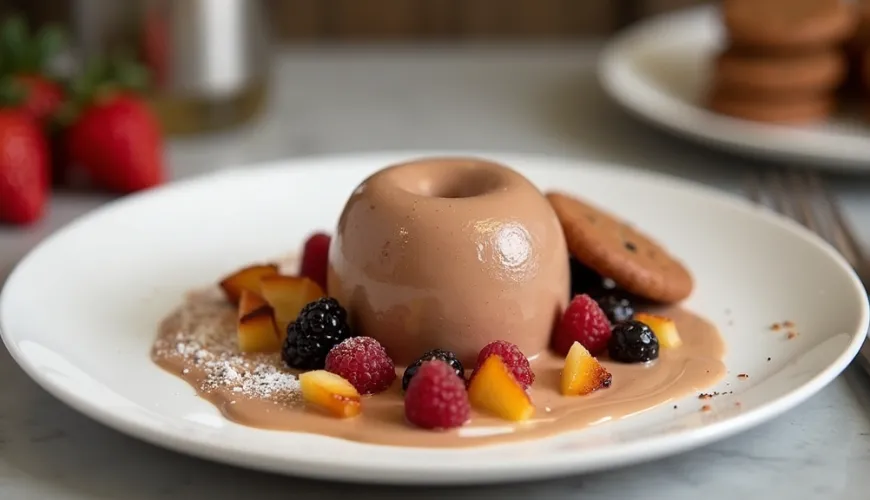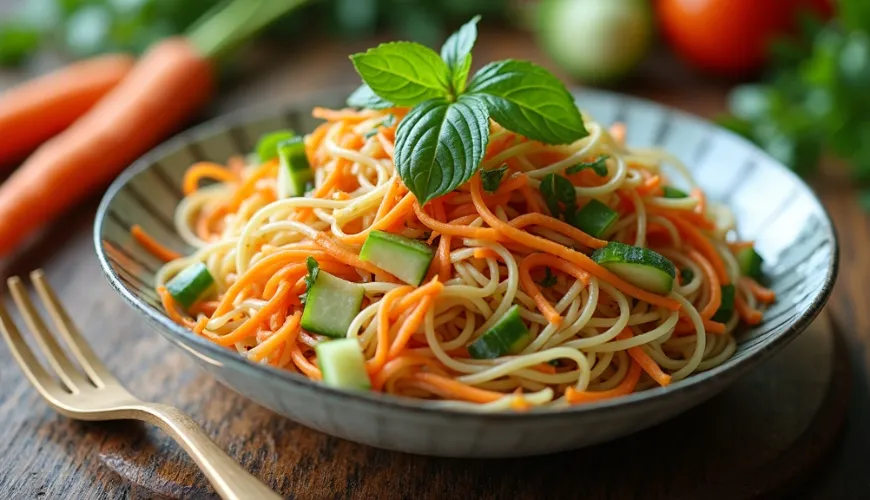
Espuma - How to Easily Become a Master in Making Homemade Foam

Espuma. A word that might sound a bit exotic in Czech, but lovers of modern gastronomy often pronounce it with enthusiasm. What exactly is espuma? How is it made and what is it used for? And why has it become so popular not only in Michelin-starred restaurants but also in the home kitchens of those who love to experiment?
Espuma comes from Spanish and translates simply to "foam." But in the kitchen, it is not just any foam. It is a light, airy emulsion, often made from natural ingredients, which is whipped into a fine foam under pressure. However, it is not whipped cream as we know it from the ordinary kitchen – espuma can be sweet, salty, hot, or cold, and its use is almost unlimited. From chocolate or fruit foams to foams made from parmesan or peas, which give dishes a modern twist and surprising texture.
Espuma - How It All Began
The trend of espumas started gaining popularity in the 1990s when Spanish chef Ferran Adrià from the famous restaurant El Bulli began using siphons, known as espuma bottles, to create fluffy foams that were new not only in their consistency but also in the way they influenced taste perception. Instead of butter or sauces, diners suddenly received clouds of flavors on their plates that melted on the tongue. Since then, espuma has found its way from haute cuisine into many households.
Espuma is not just about an impressive appearance. Foam has the ability to capture aroma and concentrate flavor, which means in practice that even a small dose of espuma can have an intense culinary effect. Moreover – and this is especially appreciated by those trying to eat healthily – foams can be prepared without fat, without sugar, and with minimal calories, making them a great ally of modern nutrition.
Espuma at Home - What Do You Need?
The basis for making espuma is an espuma bottle, also known as a whipped cream siphon. However, it is not ordinary – it must be adapted to work with gas cartridges (most commonly N2O – nitrous oxide), which create the necessary pressure to whip the mixture into foam. It is also important to have a suitable sieve to strain the mixture before pouring it into the siphon – any undissolved part could clog the valve.
And what exactly goes into the bottle? That depends only on your imagination. An espuma recipe can be based on fruits, vegetables, cheeses, herbs, chocolate, or cream. The key is that the mixture has the right consistency – too thin and it won't form, too thick and it won't pass through the nozzle. Gelatin, agar, lecithin, or xanthan are often used as stabilizers, but many great foams can be made even without them.
One of the simplest homemade recipes is strawberry espuma – just blend ripe strawberries with a little sugar and lemon juice, strain through a fine sieve, and pour into the siphon. After chilling and applying the cartridge, you get a fluffy, slightly tangy foam that is perfect as a dessert or a supplement to yogurt.
Using Espuma in the Kitchen
Espuma recipes are diverse, but they have one thing in common – they can transform ordinary food into a gastronomic experience. Sweet espumas find their place in desserts, where they can replace heavy creams or whipped creams. They pair excellently with fruit, ice cream, or cookies. A popular choice is chocolate espuma, which can be made from melted dark chocolate, cream, and a bit of sugar. The resulting foam is as fluffy as a cloud, yet intensely chocolatey.
On the other hand, savory espumas can enrich main courses – for example, pea espuma with mint as an accompaniment to grilled meat, goat cheese foam on roasted beetroot, or parmesan espuma with pasta. Such foams can also be served as amuse-bouche, a small flavorful appetizer that whets the palate before the main course.
Espumas have also found their way beyond plates – for instance, coffee espuma is an interesting alternative to the classic cappuccino. It is made from strong espresso, a little sugar, and gelatin. The resulting foam is applied to a cold or hot drink, giving it an original appearance and aroma.
Espuma and a Healthy Lifestyle
At a time when most of us are looking for ways to eat healthier but still want to enjoy culinary delights, espuma appears as an ideal solution. Thanks to its airy consistency, it can replace fatty sauces, dressings, or creamy desserts while preserving (or even enhancing) the flavor. In one serving of espuma, there are often up to 70% fewer calories than in a traditional sauce.
An interesting example can be a restaurant that served avocado, lemon, and herb espuma instead of classic mayonnaise – a flavorful yet much lighter dressing variant that guests loved. Thus, espuma offers a great way to eat deliciously and healthily at the same time.
Moreover, it allows working with natural ingredients without unnecessary additives. Fruit espumas can be made solely from fresh fruit and a bit of natural sweetener, while vegetable foams can be an interesting way to incorporate more fiber and vitamins into the diet without anyone even noticing.
Foam as a Form of Art
It's no wonder that espuma has found its place in the field of food design. Chefs use it as a means to express a creative approach to gastronomy. Foam can create structure on the plate, contrast with crunchy or baked elements, or even carry color and scent that complete the visual impression of the dish.
As renowned British chef Heston Blumenthal says: “Food is not just about taste, but also about the emotions it evokes in us." And espuma can surprise, awaken curiosity, and offer a new way to perceive ingredients – not just with the tongue, but also with the eyes and nose.
What is Espuma in the Kitchen and Why Try It?
For those who like to embark on unconventional culinary adventures, espuma is an ideal tool. It is not just a trend or a flashy trick – it is a way to look at cooking differently. With a bit of patience and the right equipment, anyone can create dishes at home that look like they came from a luxury restaurant but are healthy, tasty, and playful.
And most importantly – making espumas is fun. It's fun to create, taste, and share them. Whether you prepare whipped mango foam for a summer cake or fluffy potato espuma for roasted ribs, the result will always be impressive.
So what do you say, will you give espuma a chance? All it takes is a quality espuma bottle, fresh ingredients, and a pinch of imagination. Your kitchen can turn into a laboratory of flavors – entirely without chemicals.

